Maputo
Maputo, the vibrant capital of Mozambique, is a city where African, Portuguese, and global influences blend seamlessly, creating a rich cultural tapestry that's both intriguing and welcoming. Known for its lively atmosphere, historical landmarks, and stunning coastal views, Maputo offers visitors a unique mix of experiences.
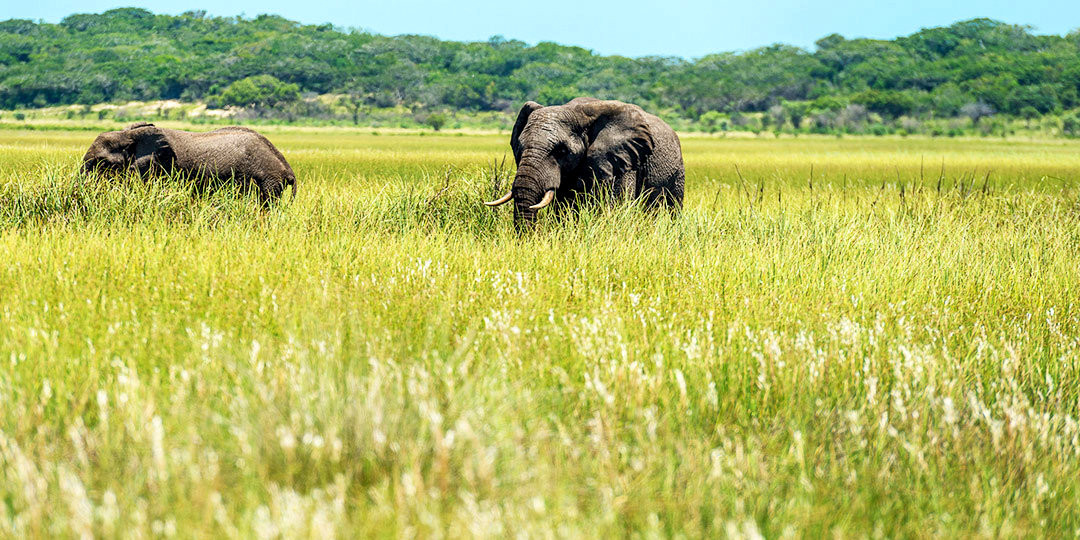
-
CFM Railway Station: An architectural marvel, this historic railway station features a grand, wrought-iron structure designed by Gustave Eiffel. It's not just a transport hub but a cultural icon of Maputo.
-
Fortaleza da Nossa Senhora da Conceição: A testament to Maputo's colonial past, this fort offers insights into the city's history and provides panoramic views of the harbor.
-
Mercado Central (Central Market): Dive into the heart of Mozican culture at the Central Market. From fresh seafood to colorful fruits and handicrafts, it's a bustling spot where you can experience local life.
-
Museu Nacional de Arte: For art enthusiasts, this museum houses a significant collection of Mozambican art, showcasing the talent and creativity of local artists from the colonial period to the present.
-
Maputo Elephant Reserve (Reserva Especial de Maputo): Located just south of the city, this reserve is home to elephants, hippos, and a variety of bird species, offering a quick escape to nature.
-
Culinary Scene: Maputo is famous for its culinary scene, which is a blend of Portuguese flavours and local ingredients. Seafood is a staple, with prawns being a must-try dish. Restaurants and street vendors also offer peri-peri chicken, matapa (a traditional dish made from cassava leaves), and pãozinho (Portuguese-style bread rolls), reflecting the city's diverse culinary influences.
-
Cultural Insights: The city's rich cultural heritage is reflected in its music, dance, and festivals. Marrabenta is a popular music genre, and traditional dances often accompany celebrations and public gatherings. Maputo also hosts various cultural events and festivals throughout the year, showcasing its artistic vibrancy.
Maputo serves as the perfect introduction to Mozambique, offering a blend of historical depth, cultural richness, and modern dynamism. Its coastal location adds to its appeal, with beautiful beaches and waterfront activities readily accessible. For travellers looking to explore Mozambique, Maputo provides a compelling mix of experiences, from cultural explorations to culinary adventures, making it a must-visit destination on your journey.
Bazaruto Archipelago
The Bazaruto Archipelago, a pristine group of islands off the coast of Mozambique in the Indian Ocean, is a true slice of paradise, offering some of the most unspoiled beaches and breathtaking marine environments in the world. Comprising six main islands - Bazaruto, Benguerra, Magaruque, Santa Carolina (also known as Paradise Island), Bangue, and Pansy Shell Island - this archipelago is the crown jewel of Mozambique's natural beauty, renowned for its vibrant coral reefs, clear turquoise waters, and diverse ecosystems.
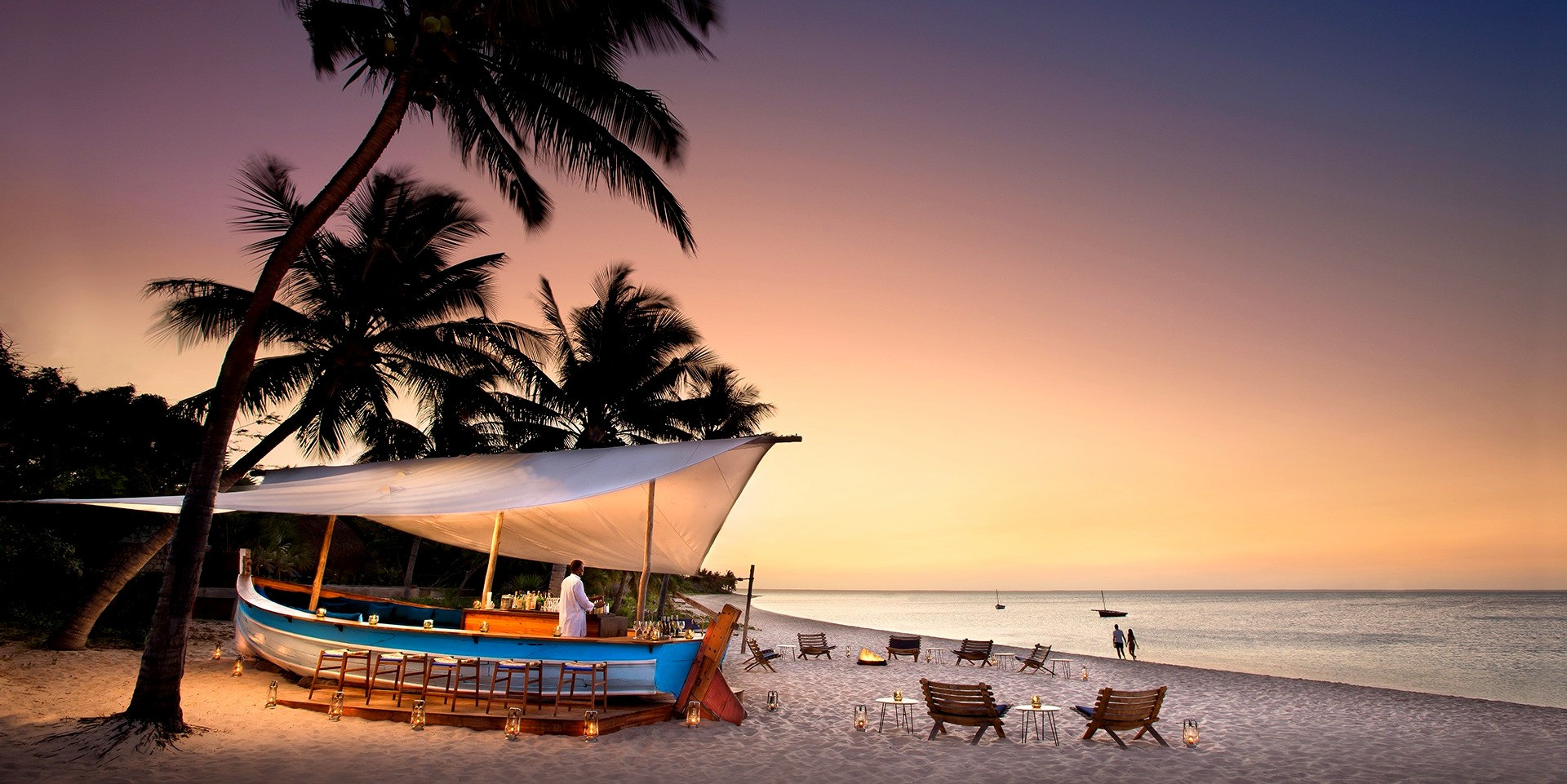
-
Diving and Snorkelling: The Archipelago is famous for its extraordinary diving spots, where adventurers can explore a vibrant underwater world. The coral reefs teem with life, including manta rays, dolphins, turtles, and a variety of tropical fish. Notable dive sites include Two Mile Reef and the Aquarium, offering experiences suitable for both beginners and advanced divers.
-
Sailing and Island Hopping: Exploring the islands by dhow (a traditional sailing vessel) is a magical experience, allowing visitors to discover secluded beaches, hidden coves, and the unique flora and fauna of each island.
-
Benguerra Island is the second largest island, known for its luxury lodges, beautiful freshwater lakes, and Arabian influenced architecture. Horseback riding along the beach and island tours are popular activities here.
-
Santa Carolina: Often referred to as Paradise Island, Santa Carolina is famed for its stunning coral reefs and excellent fishing spots. It's a fantastic location for day trips, with rich birdlife and historical ruins to explore.
-
Fishing: The Archipelago is a world-class destination for fishing enthusiasts, offering opportunities to catch marlin, sailfish, and tuna, among others, in the deep waters surrounding the islands.
-
Conservation Efforts: The Bazaruto Archipelago has been designated a national park to protect its diverse marine ecosystems and the endangered species that inhabit them, such as the dugong. Conservation efforts focus on sustainable tourism practices to ensure that the natural beauty and biodiversity of the islands are preserved for future generations.
The Bazaruto Archipelago offers a unique blend of natural beauty, adventure, and relaxation. Its islands serve as a haven for those looking to escape the hustle and bustle of modern life, offering a serene environment where time seems to stand still. Whether you're snorkelling in crystal-clear waters, enjoying the panoramic views of the sandy dunes, or simply relaxing on a secluded beach, the Archipelago promises an unforgettable experience of Mozambique's natural wonders. For travellers seeking tranquilly, adventure, and unparalleled natural beauty, the Bazaruto Archipelago is a must-visit destination.
Gorongosa National Park
Gorongosa National Park, often referred to as the "Serengeti of the South," is one of Mozambique's most precious natural treasures. Situated at the southern end of the Great African Rift Valley, the park encompasses a vast and diverse ecosystem that includes savannahs, woodlands, wetlands, and a unique rainforest at the bottom of Mount Gorongosa. After facing challenges due to civil conflict and overuse of resources, Gorongosa has been the focus of a significant restoration project, making it a shining example of conservation success and sustainable tourism in Africa.
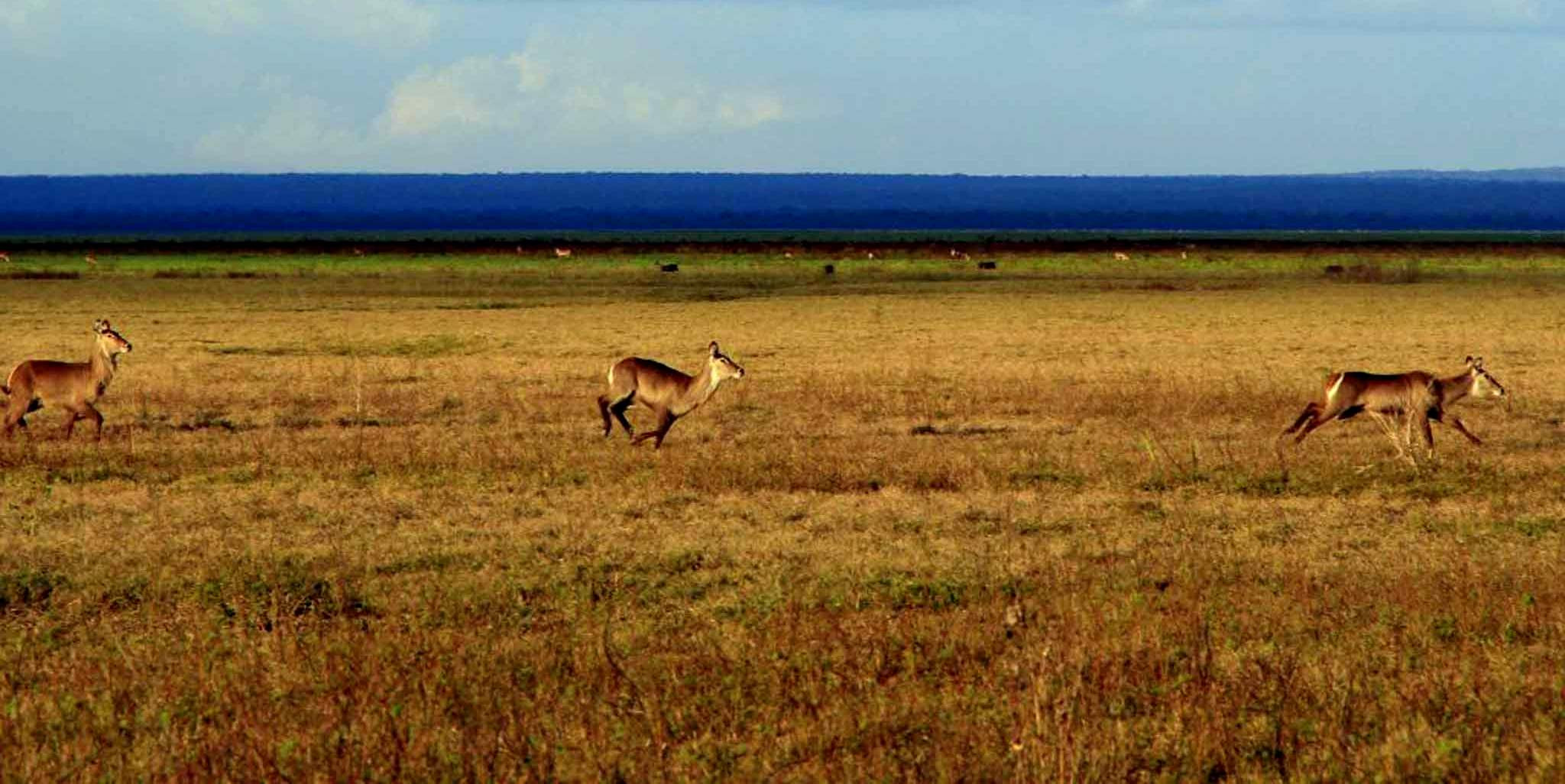
-
Wildlife Safaris: Gorongosa offers incredible wildlife viewing opportunities. Visitors can expect to see a variety of animals, including elephants, lions, hippos, crocodiles, and a plethora of bird species. The park's successful reintroduction programs have significantly increased the populations of these animals, making it a fantastic destination for safaris.
-
Mount Gorongosa: A hike to Mount Gorongosa provides a chance to explore its lush rainforest, waterfalls, and coffee plantations. The mountain plays a critical role in the park's ecosystem, capturing moisture from the clouds and providing water to the plains below.
-
Lake Urema and Wetlands: The heart of the park, Lake Urema, and its surrounding wetlands offer stunning landscapes and are crucial for the park's biodiversity. These areas are a haven for bird watchers, with numerous species making their home here.
-
Community Projects: Gorongosa is not just about wildlife; it's also about people. The park runs various community outreach and development projects, including education, health, and sustainable agriculture programmes. Visitors can learn about these efforts and see firsthand the positive impact of sustainable tourism.
-
Guided Walks and Drives: With experienced guides, guests can venture into different parts of the park to learn about its flora, fauna, and conservation efforts. Night drives also offer a unique chance to see nocturnal creatures.
-
Conservation Efforts: The Gorongosa Restoration Project, a partnership between the Mozambique government and the Carr Foundation, has been pivotal in rejuvenating the park's biodiversity and developing community programmes. This collaborative approach aims not only to restore the natural environment but also to improve the livelihoods of the local communities surrounding the park.
Gorongosa National Park is a testament to nature's resilience and humanity's ability to positively impact the environment. Visiting Gorongosa supports conservation efforts and community development, providing a deeply enriching experience beyond the typical safari. The park's diverse ecosystems offer something for every nature lover, from thrilling wildlife encounters to serene landscapes and engaging cultural experiences. Gorongosa is a beacon of hope for conservation in Africa and a must-visit for anyone looking to explore the natural beauty and wildlife of Mozambique.
Ilha de Moçambique
Ilha de Moçambique (Mozambique Island) is a remarkable blend of history, culture, and architectural splendor, anchored off the northern coast of Mozambique. This small island, merely 3 km long and 500 meters wide, is connected to the mainland by a narrow causeway and is a UNESCO World Heritage Site. It stands as a testament to the layers of history that have unfolded here, from Swahili trading posts to Portuguese colonial rule, making it a fascinating destination for those interested in the rich tapestry of Mozambican and East African history.
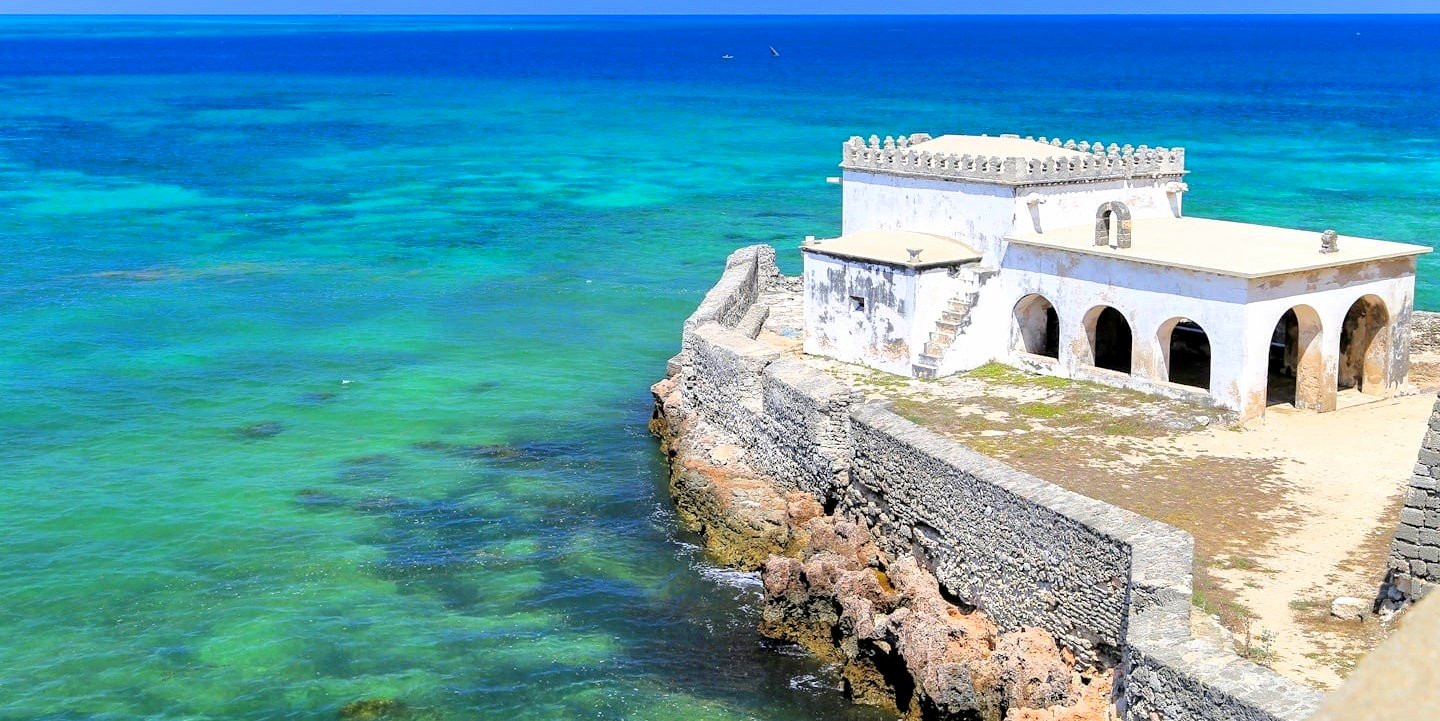
-
Fort São Sebastião: Dominating the northern tip of the island, this is the oldest complete fort in sub-Saharan Africa. Constructed in the 16th century, it offers insight into the island's strategic importance and its role in the Portuguese empire.
-
The Chapel of Nossa Senhora de Baluarte: Located near the fort, this chapel is considered to be the oldest European building in the southern hemisphere, built in 1522. Its unique blend of Gothic and Manueline architectural styles makes it a fascinating site for visitors.
-
The Palace of São Paulo, once a colonial governor's residence, now houses the island's museum. This 17th-century building showcases the island's history through its collection of artefacts and exhibits.
-
Stone Town and Macuti Town: The island is divided into two main areas - Stone Town, with its centuries-old coral stone buildings and narrow streets, and Macuti Town, characterised by its traditional thatched homes. Exploring these areas offers a glimpse into the island's diverse cultural influences and architectural heritage.
-
The Maritime Museum: Situated in one of the old warehouses by the docks, the museum delves into the island's seafaring history and its role in regional trade networks.
-
Cultural Insights: Ilha de Moçambique is a melting pot of Swahili, Arab, Indian, and European cultures, evident in its cuisine, architecture, and traditions. The island's residents maintain a strong connection to their cultural heritage, celebrating with festivals, music, and dance that reflect this rich mosaic of influences.
-
Conservation and Heritage: The designation of Ilha de Moçambique as a UNESCO World Heritage Site has brought attention to the need for preservation of its unique historical and architectural heritage. Efforts are ongoing to maintain and restore the island's buildings and fortifications, ensuring that its stories and beauty endure for future generations.
Visiting Ilha de Moçambique offers more than just a journey through time; it's an immersive experience into the heart of Mozambique's historical and cultural evolution. The island's blend of architectural styles, its compelling history as a major trading post, and its picturesque setting make it an unparalleled destination. For those looking to explore the depths of Mozambique's past, understand its diverse cultural influences, and witness the beauty of preservation, Ilha de Moçambique is an essential stop on any Mozambican adventure.
Tofo Beach
Tofo Beach, nestled along the coast of Mozambique's Inhambane Province, is a vibrant and picturesque destination known for its wide, sandy beaches, crystal-clear waters, and laid-back atmosphere. This charming seaside town has become increasingly popular among travelers seeking both adventure and relaxation, thanks to its excellent water sports opportunities, rich marine life, and welcoming local community.
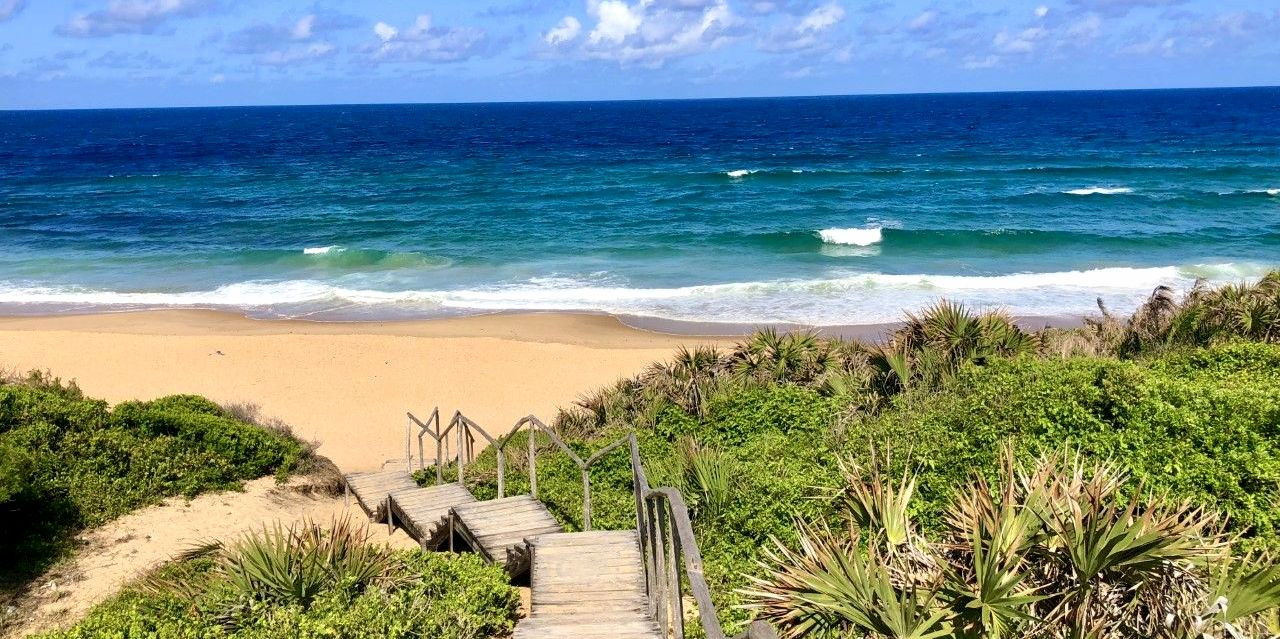
-
Diving and Snorkeling: Tofo is renowned for its exceptional diving and snorkeling sites, where enthusiasts can explore a vibrant underwater world. The area is particularly famous for its regular sightings of manta rays and whale sharks, making it one of the best places in the world for marine megafauna encounters.
-
Praia do Tofo and Praia dos Cocos: These expansive beaches offer golden sands and warm waters, ideal for sunbathing, swimming, and long, leisurely walks. The coastline's natural beauty provides a serene backdrop for relaxation and photo opportunities.
-
Marine Research Centers: Tofo's unique marine ecosystem has attracted several research centers focused on the conservation of marine life, particularly manta rays and whale sharks. Visitors can learn about their efforts and even participate in some conservation activities.
-
Local Markets: The bustling local market in Tofo is a great place to experience Mozambican culture, offering everything from fresh seafood and produce to handmade crafts and textiles. It's a perfect spot to pick up souvenirs and support the local economy.
-
Water Sports: Apart from diving and snorkeling, Tofo is a hotspot for other water sports, including surfing, kite surfing, and deep-sea fishing. The area's consistent waves and winds make it suitable for both beginners and experienced enthusiasts.
-
Culinary Scene: Tofo's culinary scene is a delightful mix of traditional Mozambican flavors and international cuisine, thanks to the town's diverse community of locals and expats. Seafood is a staple here, with dishes like grilled prawns, calamari, and fresh fish dominating the menus. Restaurants and beach bars offer a relaxed environment to enjoy the local fare while overlooking the ocean.
-
Community and Culture: Tofo's warm and welcoming community is one of its greatest assets. Visitors can immerse themselves in the local culture through music, dance, and community events. The town has a friendly vibe that encourages interactions between locals and travellers, making it a great place to make new friends and learn about Mozambican life.
Tofo Beach offers a perfect blend of natural beauty, adventure, and cultural immersion. Whether you're diving with whale sharks, enjoying the tranquilly of the beach, or exploring the local market, Tofo provides a memorable experience for all types of travellers. Its reputation as a laid-back paradise, combined with the opportunity to engage in conservation efforts and community activities, makes Tofo Beach an essential destination for anyone visiting Mozambique.
Quirimbas Archipelago
The Quirimbas Archipelago, a breathtaking string of islands stretching along the northern coast of Mozambique, is a sanctuary of untouched natural beauty and serenity. This chain of 32 islands, running from Pemba in the south to the Rovuma River at the Mozambique-Tanzania border, is renowned for its crystal-clear waters, vibrant coral reefs, and rich cultural heritage. The Archipelago is a sought-after destination for luxury travelers, conservationists, and adventure seekers alike, offering a unique blend of natural wonders and historical significance.
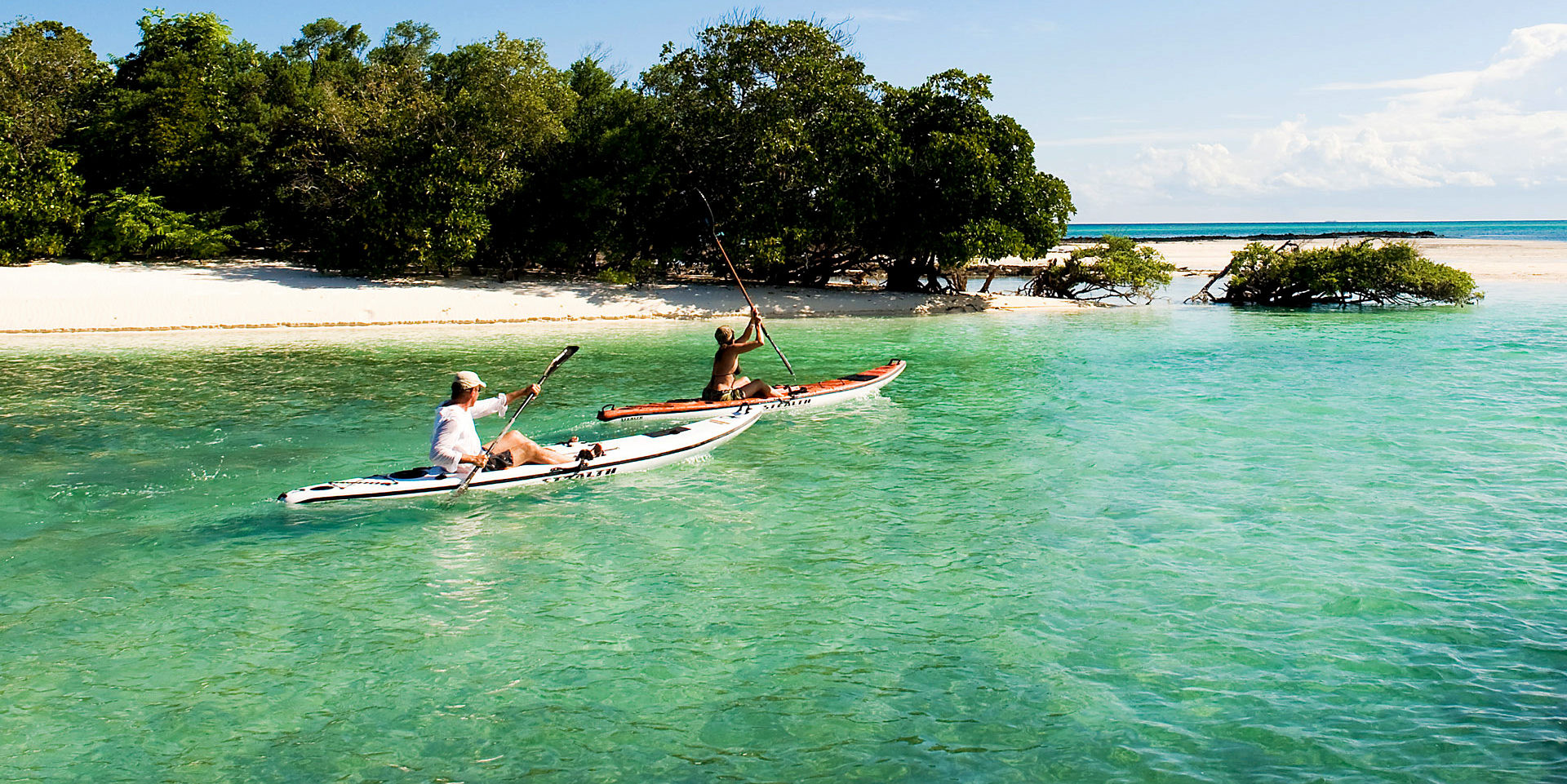
-
World-Class Diving and Snorkeling: The Quirimbas Archipelago is home to some of the most pristine coral reefs in the Indian Ocean, providing spectacular diving and snorkeling opportunities. The underwater landscape is a kaleidoscope of marine biodiversity, including dolphins, turtles, and a myriad of tropical fish species.
-
Quirimbas National Park: Encompassing a significant portion of the Archipelago and part of the mainland, the Quirimbas National Park is a conservation area that protects a diverse range of ecosystems, from coastal forests and mangroves to coral reefs. It's a haven for wildlife enthusiasts, offering the chance to observe rare species in their natural habitat.
-
Historical Sites: Many islands in the Archipelago, such as Ibo Island, are steeped in history, with remnants of Portuguese colonial architecture and ancient Swahili trading posts. Ibo Island, in particular, is known for its centuries-old fortresses and buildings, offering a glimpse into the area's rich past.
-
Luxury Resorts: The Quirimbas Archipelago is dotted with exclusive luxury resorts, providing guests with secluded beaches, private villas, and unparalleled service. These resorts are committed to sustainability and conservation, offering eco-friendly accommodations and experiences that respect the natural environment.
-
Traditional Dhow Safaris: Exploring the Archipelago by dhow, a traditional sailing vessel, is a quintessential experience. These safaris offer a unique way to island-hop, snorkel in hidden bays, and witness the stunning sunsets over the Indian Ocean.
-
Conservation Efforts: Conservation is a key focus in the Quirimbas Archipelago, with efforts aimed at protecting its marine ecosystems and promoting sustainable tourism. The Quirimbas National Park plays a crucial role in these initiatives, working alongside local communities and international organizations to preserve the area's natural and cultural heritage.
-
Cultural Insights: The Archipelago's rich cultural tapestry is influenced by centuries of trade and interaction between African, Arab, and Portuguese cultures. This blend is reflected in the local cuisine, traditional crafts, and the warm hospitality of the island communities. Visiting the Quirimbas Archipelago offers a unique opportunity to engage with local traditions and learn about the area's fascinating history.
The Quirimbas Archipelago is a paradise for those seeking solitude, natural beauty, and a touch of luxury. Its remote islands offer an escape from the hustle and bustle of daily life, allowing visitors to reconnect with nature in an extraordinary setting. Whether you're exploring the depths of its azure waters, relishing the tranquility of its private beaches, or delving into the history of its ancient ruins, the Quirimbas Archipelago promises an unforgettable journey through one of Mozambique's most enchanting destinations.
Pemba
Pemba, a charming coastal city in northern Mozambique, serves as the gateway to the enchanting Quirimbas Archipelago. Known for its natural harbor, one of the world's largest, Pemba is surrounded by stunning beaches with soft, white sand and crystal-clear waters, making it a popular destination for beach lovers and water sports enthusiasts alike. Its laid-back atmosphere, coupled with the warm hospitality of its residents, offers a peaceful retreat for those looking to soak up the Mozambican sun and culture.
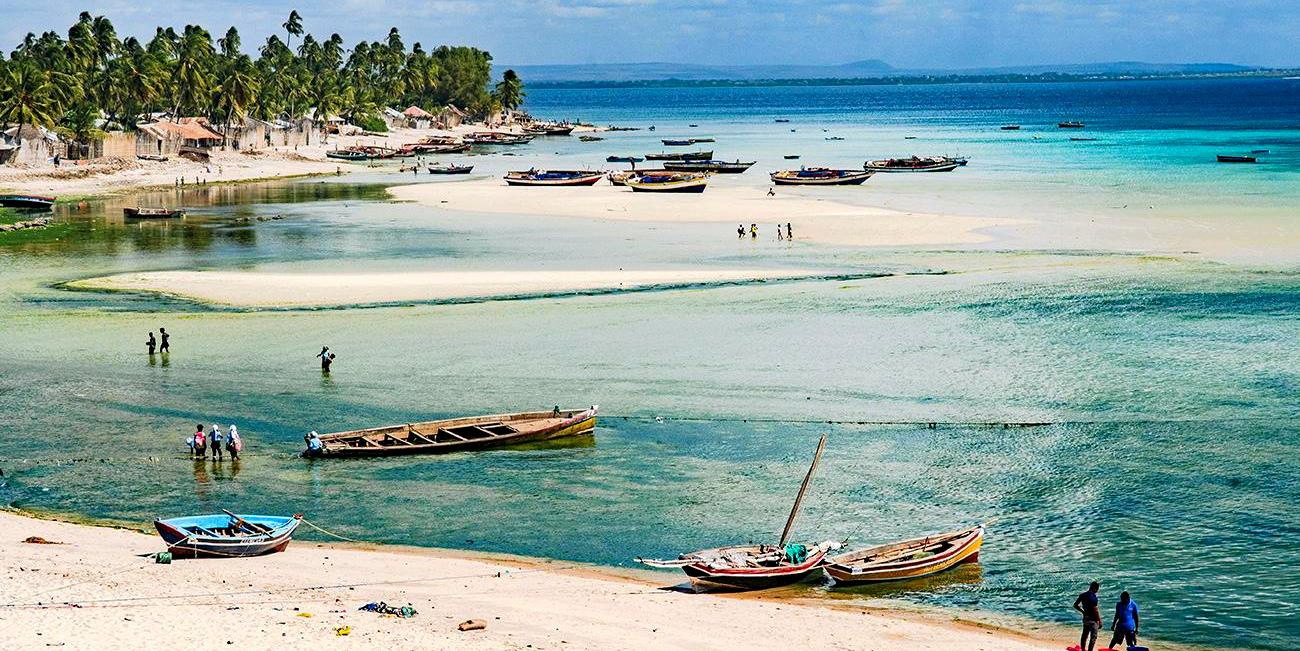
-
Wimbi Beach: Often the centerpiece of a visit to Pemba, Wimbi Beach is renowned for its beautiful palm-lined shores and vibrant coral reefs. It's a perfect spot for swimming, snorkeling, and enjoying various water activities or simply relaxing by the sea.
-
Pemba Artisanal Market: For a taste of local culture, the Pemba Artisanal Market is a must-visit. Here, travelers can find a wide array of handcrafted goods, from traditional Makonde carvings and batiks to jewelry and pottery, offering a glimpse into the artistic talents of the region.
-
Mozambique Island: Although located further south, a trip to Pemba is often combined with a visit to Mozambique Island, a UNESCO World Heritage site known for its rich history and architectural marvels from the colonial era.
-
Diving and Water Sports: Pemba's coastal waters are a paradise for divers and snorkelers, with an abundance of marine life and pristine coral gardens. Kayaking, sailing, and deep-sea fishing are also popular activities, offering different ways to experience the beauty of the Indian Ocean.
-
Culinary Scene: The cuisine in Pemba is a delightful fusion of local Mozambican flavours and Portuguese influences, with seafood taking center stage. Visitors can indulge in dishes like grilled prawns, fresh fish, and peri-peri chicken, accompanied by local staples such as cassava and rice. The city's restaurants and beach bars provide not only delicious food but also scenic views of the ocean, making for an unforgettable dining experience.
-
Cultural Insights: Pemba's cultural landscape is shaped by its diverse population, including indigenous ethnic groups, Portuguese descendants, and expatriates from around the world. This multicultural blend is reflected in the city's festivals, music, and daily life, creating a vibrant community atmosphere. Engaging with locals and participating in cultural events can enrich visitors' understanding of Mozambique's traditions and contemporary lifestyle.
Pemba is an ideal destination for travellers seeking a mix of relaxation, adventure, and cultural immersion. Its stunning beaches, friendly atmosphere, and proximity to the Quirimbas Archipelago make it a compelling stop for those exploring northern Mozambique. Whether you're here to dive into the azure waters, explore local markets, or simply unwind on the beach, Pemba offers a serene and welcoming environment that captures the essence of Mozambican coastal life.
Niassa Reserve
The Niassa Reserve, located in the far north of Mozambique bordering Tanzania, is one of Africa's last great wilderness areas, offering a truly remote and unspoiled safari experience. This vast conservation area, spanning over 42,000 square kilometers, is roughly twice the size of the famous Kruger National Park in South Africa. The reserve is known for its rugged terrain, which includes miombo woodlands, open savannahs, and the majestic Lugenda River that meanders through the landscape.
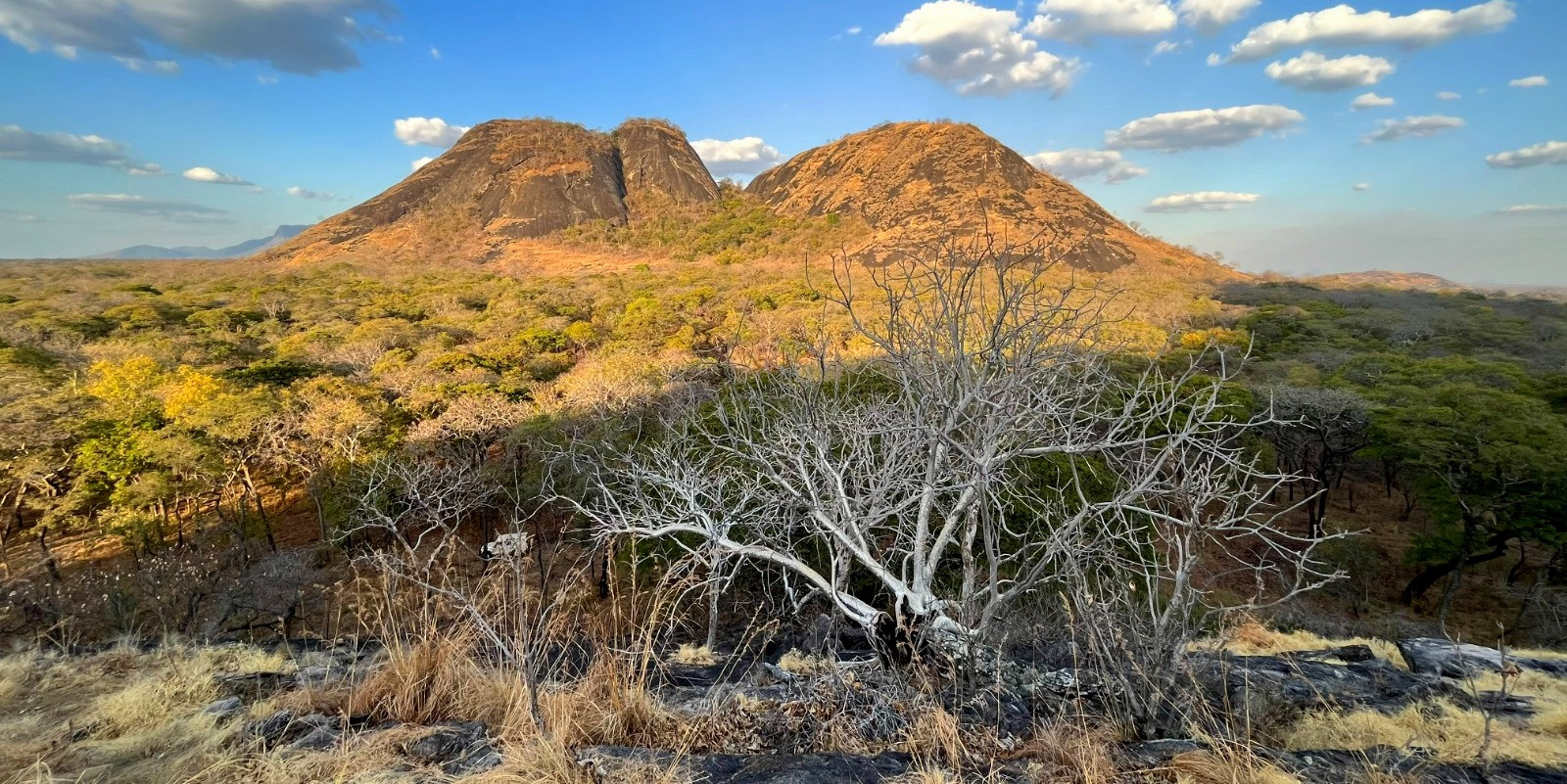
-
Wildlife: Niassa Reserve is home to significant populations of elephants, lions, leopards, and African wild dogs, among others. It's one of the few places in Africa where you can still see large herds of elephants roaming freely. The reserve's commitment to conservation has also made it a sanctuary for the endangered African wild dog.
-
Bird Watching: With over 300 bird species recorded, the reserve is a paradise for bird enthusiasts. The diverse habitats within Niassa provide opportunities to spot a wide variety of birds, from colorful bee-eaters to majestic fish eagles.
-
Cultural Encounters: The reserve is not just about wildlife; it also encompasses the livelihoods of the Yao community, who have lived in harmony with the land for centuries. Visitors can engage with local communities, learn about traditional practices, and understand the challenges and successes of conservation from a community perspective.
-
Adventure Activities: Niassa offers a range of activities for the adventurous traveler, including guided walking safaris, canoe trips on the Lugenda River, and fly camping under the stars. These experiences provide an intimate connection with the African wilderness, far from the crowds found in more commercialized safari destinations.
-
Conservation Efforts: Niassa Reserve's vast size and remote location present unique challenges and opportunities for conservation. The area is a key focus for efforts to combat poaching and habitat destruction, with a particular emphasis on protecting elephant and lion populations. Collaborative projects involving the Mozambican government, local communities, and international conservation organizations are ongoing to ensure the sustainable management of the reserve's biodiversity.
Niassa Reserve is a destination for those seeking an authentic and adventurous safari experience, away from the well-trodden tourist paths. Its untouched landscapes, abundant wildlife, and the opportunity to engage with local communities make it a unique and rewarding destination. Visiting Niassa is not just about witnessing Africa's raw beauty; it's also an opportunity to support vital conservation work and sustainable development efforts that benefit both wildlife and local populations. For the true safari aficionado, Niassa Reserve offers an unparalleled glimpse into the heart of wild Africa.
Inhambane
Inhambane, often heralded as one of Mozambique's most picturesque destinations, is a historic city on the southeast coast, famed for its colonial architecture, tranquil beaches, and friendly atmosphere. This charming city, one of the oldest settlements on the East Coast of Mozambique, has a rich history dating back to the 11th century, when it was a key port in the Indian Ocean trade networks. Today, Inhambane offers a blend of cultural heritage, natural beauty, and aquatic adventures, making it a compelling destination for travellers.
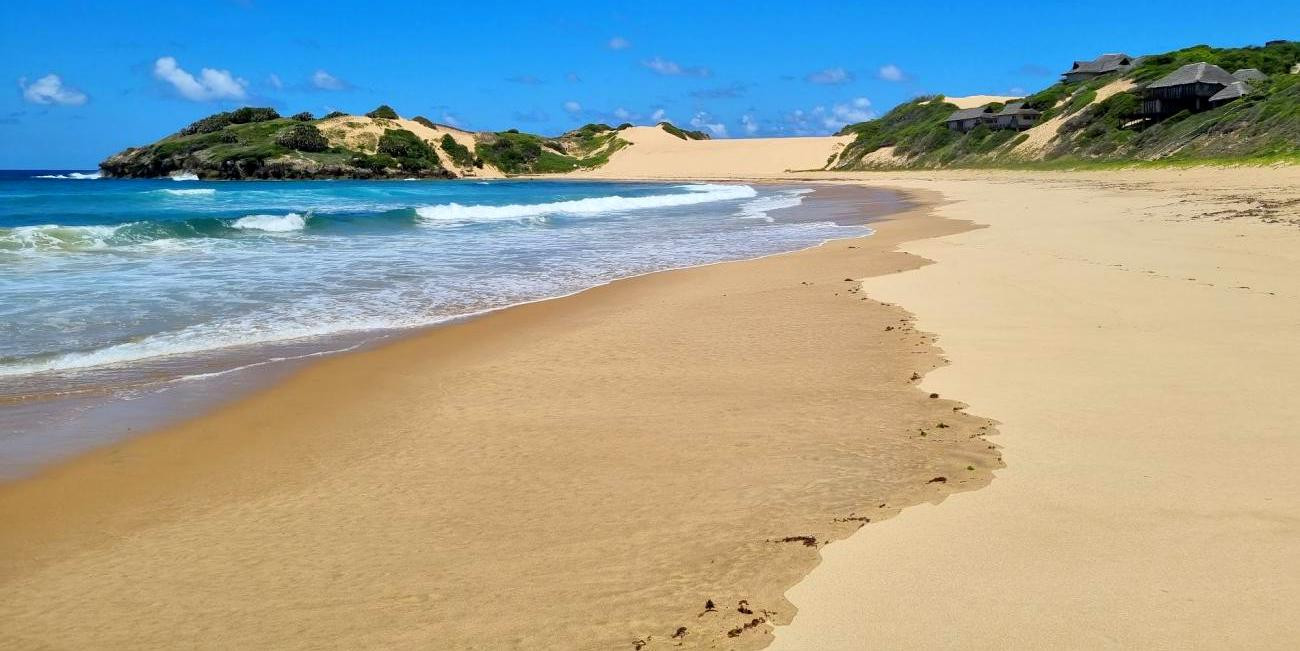
-
Historical Architecture: Inhambane's streets are lined with colonial-era buildings, reflecting its Portuguese heritage. Notable landmarks include the 200-year-old Cathedral of Our Lady of Conception, where visitors can climb the tower for panoramic views of the city and harbour.
-
Beaches: The province of Inhambane is renowned for its stunning beaches, including Tofo Beach and Barra Beach. These spots are not only perfect for relaxation but also offer some of the best diving and snorkelling experiences in Mozambique, with vibrant coral reefs and abundant marine life.
-
Dhow Trips: Traditional dhow boats offer a unique way to explore the coastline and visit the nearby islands. These trips provide a glimpse into the traditional sailing culture of the region and offer stunning views of the sunset over the Indian Ocean.
-
Marine Life: Inhambane is a hotspot for marine enthusiasts, particularly for sighting whale sharks and manta rays. The area is one of the few places in the world where these gentle giants are regularly seen, making it a premier destination for snorkelling and diving.
-
Culinary Scene: The cuisine in Inhambane is a delicious blend of Portuguese influences and local flavours, with seafood being a highlight. Visitors can enjoy dishes such as grilled prawns, lobster, and the traditional Mozambican peri-peri chicken. The local markets also offer a chance to taste fresh tropical fruits and other local delicacies.
-
Cultural Insights: Inhambane is home to a diverse mix of cultures, including local ethnic groups and a Portuguese-speaking community. This cultural mosaic is reflected in the city's music, dance, and festivals. Visitors can experience this rich cultural tapestry through local performances and community events, which often showcase traditional Mozambican music and dance.
Inhambane is an ideal destination for travellers seeking a mix of history, culture, and natural beauty. Its well-preserved colonial architecture, coupled with the stunning beaches and rich marine life, offers a unique experience that captures the essence of Mozambique. Whether you're exploring the historic city, relaxing on its beautiful beaches, or diving with marine giants, Inhambane provides a memorable and enriching travel experience.
Lake Niassa (Lake Malawi)
Lake Niassa, known as Lake Malawi in neighbouring Malawi and Lago Niassa in Mozambique, is one of Africa's Great Lakes and the ninth largest in the world. Straddling the borders of Mozambique, Malawi, and Tanzania, this vast freshwater lake is famed for its crystal-clear waters, stunning landscapes, and unparalleled biodiversity, particularly its unique species of cichlid fish. The Mozambican side of Lake Niassa offers a serene and relatively untouched haven for travelers seeking solace in nature's embrace.
.jpg)
-
Biodiversity: Lake Niassa is a UNESCO World Heritage Site, recognised for its remarkable diversity of fish species, many of which are endemic to the lake. It's a haven for biologists and nature enthusiasts keen on exploring one of the most biodiverse freshwater ecosystems on Earth.
-
Water Sports: The lake's clear, calm waters are ideal for a variety of water sports, including snorkelling, diving, kayaking, and sailing. Exploring the lake by kayak offers a unique perspective on its vastness and the opportunity to discover secluded beaches and islands.
-
Beaches: The Mozambican shoreline of Lake Niassa is dotted with beautiful, sandy beaches that offer tranquilly and stunning views. Likoma Island, though politically part of Malawi, lies close to the Mozambican mainland and is accessible to visitors from Mozambique, known for its beautiful beaches and the impressive St. Peter's Cathedral.
-
Cultural Experiences: The communities living along the shores of Lake Niassa have a rich cultural heritage. Visitors have the opportunity to engage with local communities, learn about their way of life, and experience traditional dances, music, and crafts.
-
Conservation Efforts: The lake's ecosystem faces threats from overfishing, habitat destruction, and pollution. Conservation initiatives are in place to protect its unique biodiversity, involving local communities in sustainable fishing practices and promoting eco-friendly tourism to raise awareness about the lake's ecological importance.
Lake Niassa's natural beauty, combined with its biological significance and cultural richness, makes it a unique destination for those looking to escape the hustle and bustle of more crowded tourist spots. It offers a blend of relaxation, adventure, and learning opportunities, making it an ideal location for eco-tourists, adventure travelers, and anyone interested in the natural world. Whether you're snorkeling among vibrant cichlids, kayaking under the wide African sky, or simply unwinding on its peaceful shores, Lake Niassa provides a serene and captivating experience unmatched in Southern Africa.
Mozambique Visa Requirements
Mozambique's visa requirements can vary based on your nationality, the purpose of your visit, and the duration of your stay. However, here are some general guidelines and tips regarding visa requirements for Mozambique as of my last update in April 2023. Please note that visa policies can change, so it's always a good idea to check with the nearest Mozambican embassy or consulate, or their official immigration website, for the most current information before planning your trip.
General Visa Requirements for Tourists
-
Passport Validity: Your passport should be valid for at least six months beyond your intended stay in Mozambique.
-
Visa Application: Many nationalities are eligible to obtain a visa on arrival in Mozambique for tourism purposes. However, it's recommended to apply for a visa in advance if possible, especially during peak travel times or if you're entering Mozambique through a less frequented border post.
-
Photographs: You typically need at least two passport-sized photos for your visa application, whether applying in advance or on arrival.
-
Return Ticket: Proof of a return ticket or onward travel may be required.
-
Accommodation Booking: Details of your accommodation or a letter of invitation if staying with friends or family might be requested.
-
Visa Fee: The visa fee varies based on your nationality and where you apply. Fees are subject to change, so check the latest information when applying.
Visa on Arrival
-
Eligibility: Citizens of many countries can obtain a visa on arrival at major airports and some land borders. The visa on arrival is usually valid for a single entry and a stay of up to 30 days, which can sometimes be extended within Mozambique.
-
Procedure: To obtain a visa on arrival, you typically need to fill out an application form, present the required documents (including your passport and photos), and pay the visa fee. The process can vary slightly at different entry points.
-
E-Visa: Mozambique has been working on implementing an e-visa system to simplify the visa application process. If available, an e-visa can be a convenient option, allowing travellers to apply online and receive their visa electronically before departure.
Notes
-
Vaccinations: Depending on your travel itinerary, a Yellow Fever vaccination certificate may be required if you're arriving from or have transited through a country with a risk of Yellow Fever transmission.
-
Business and Work Visas: If you're visiting Mozambique for reasons other than tourism, such as business or work, different requirements and a separate visa category will apply.
Always verify visa requirements well in advance of your travel dates to ensure you have the most current information and to avoid any potential issues upon entry into Mozambique.
Tips for Best Places to Visit in Mozambique
Visiting Mozambique, with its stunning coastline, vibrant cultures, and rich history, promises an unforgettable journey. Here are some tips to help you make the most of your trip to some of Mozambique's best places:
General Tips for Mozambique
-
Travel Documents: Ensure your passport is valid for at least six months beyond your planned stay. Check the latest Mozambique visa requirements before your trip, as many nationalities can obtain a visa on arrival.
-
Health Precautions: Consult with a travel clinic for recommended vaccinations and malaria prophylaxis. Mosquito repellent and sun protection are must-haves.
-
Currency and Payments: The Mozambican Metical (MZN) is the local currency. While ATMs are available in larger towns and cities, carrying some cash is advisable, especially in remote areas. Credit cards may not be widely accepted outside of major hotels and resorts.
-
Language: Portuguese is the official language. Learning a few basic phrases can enhance your interactions with locals. English is spoken in tourist areas and hotels.
Specific Destinations
-
Maputo: Explore the city's rich architectural heritage and vibrant markets. Try the local seafood delicacies in the city's restaurants.
-
Bazaruto Archipelago: Ideal for snorkelling and diving enthusiasts. Book tours and accommodations in advance, especially during peak season.
-
Gorongosa National Park: Opt for a guided safari to fully appreciate the park's wildlife and conservation efforts. Staying within or near the park offers the best experience.
-
Ilha de Moçambique: Respect the cultural heritage sites. Consider hiring a local guide to gain deeper insights into the island's history.
-
Tofo Beach is great for water sports enthusiasts. The area is renowned for whale shark and manta ray sightings, so don't miss out on snorkelling or diving tours.
-
Quirimbas Archipelago: Perfect for a secluded getaway. Look into eco-friendly lodging options to support conservation efforts.
-
Pemba: Explore the local markets for crafts and textiles. Enjoy the city's beaches, which are less crowded than those in more popular tourist destinations.
-
Niassa Reserve: Due to its remote location, plan your visit through a reputable tour operator who can arrange transport and accommodation.
-
Inhambane: Visit both the Tofo and Barra beaches for a mix of relaxation and water activities. The city of Inhambane is worth exploring for its historical sites.
-
Lake Niassa (Lake Malawi): ideal for freshwater snorkelling and experiencing local village life. Respect local customs and the environment.
Travel Etiquette
-
Respect Local Cultures: Mozambique is home to diverse cultures and traditions. Showing respect and openness to learning about local customs is appreciated.
-
Environmentally Friendly: Practice responsible tourism by minimising your environmental impact, especially in protected areas and near marine life.
-
Negotiate Prices: In markets and with street vendors, it's common to negotiate prices. However, do so respectfully.
Mozambique offers a diverse array of experiences, from pristine beaches to rich cultural encounters. With thoughtful planning and an adventurous spirit, you're set for an enriching journey through one of Africa's most captivating destinations.
Best Time to Visit Mozambique
Mozambique's climate is characterised primarily by two seasons: the dry season and the wet season. Each season offers distinct experiences for travellers, depending on your interests and the activities you plan to enjoy. Here's a breakdown of what you can expect in Mozambique throughout the year:
Dry Season (May to October)
-
Weather: This is the cooler, drier period of the year, with daytime temperatures ranging comfortably between 20°C to 30°C (68°F to 86°F). Nights can be cooler, especially in the southern regions.
-
Activities and Events: The dry season is ideal for wildlife viewing, as animals congregate around water sources, making parks like Gorongosa National Park excellent for safaris. It's also the best time for beach activities, diving, and snorkeling, with clear skies and minimal rainfall enhancing outdoor experiences.
-
Travel Tips: This is considered the peak season for tourism, especially from July to August, due to European summer holidays. Booking accommodations and tours in advance is recommended.
Early Wet Season (November to December)
-
Weather: The early wet season sees the start of the rains, but they are usually not as heavy or frequent, allowing for continued travel and exploration with the added beauty of greener landscapes.
-
Activities and Events: It's a good time for bird watching as migratory birds arrive. The weather remains warm and is suitable for beach visits, although there might be occasional showers.
-
Travel Tips: With fewer tourists, you can enjoy less crowded destinations and potentially lower prices for accommodations.
Peak Wet Season (January to March)
-
Weather: This is the height of the wet season, with heavy rains, especially in the north and along the coast. Temperatures are high, and humidity increases.
-
Activities and Events: While outdoor activities might be challenging during heavy rainfalls, this period offers lush landscapes and is excellent for bird watching. It's also a great time to experience local life and culture in less touristy areas.
-
Travel Tips: Be prepared for possible disruptions, such as delayed travel or inaccessible roads in more remote areas. Malaria risk is higher, so take the necessary precautions.
Late Wet Season (April)
-
Weather: Rainfall begins to decrease, and temperatures start to cool down, making it a transitional period with changing landscapes as the country prepares for the dry season.
-
Activities and Events: This can be a lovely time to visit, with fewer tourists and the environment still lush and green. It's also the tail end of the bird-watching season.
-
Travel Tips: As the rainy season winds down, it's an opportune time to explore the outdoors with less risk of rain but before the peak tourist season starts.
The best time to visit Mozambique depends on your interests and what you hope to see and do. The dry season offers the best overall conditions for a wide range of activities, making it the most recommended time for a visit.
Mozambique, with its breathtaking landscapes, rich history, and vibrant culture, offers an array of unforgettable experiences. From the lively capital of Maputo to the pristine beaches of the Bazaruto Archipelago and the rich wildlife of Gorongosa National Park, there's something for every traveller. Ideal for those seeking adventure, relaxation, or cultural immersion, the best time to visit is during the dry season from May to October. Beyond its natural beauty, Mozambique's warm hospitality ensures a welcoming experience. Whether exploring its coastal gems, engaging with local traditions, or savouring its culinary delights, Mozambique promises an authentic and enriching journey through one of Africa's most captivating destinations.
FAQs for Best Places to Visit in Mozambique
Q: What is the best time to visit Mozambique?
A: The best time to visit Mozambique is during the dry season from May to October, which offers pleasant weather for beach activities, wildlife viewing, and sightseeing.
Q: Do I need a visa to visit Mozambique?
A: Most visitors need a visa for Mozambique, which can often be obtained on arrival at major airports and some land borders. Check the latest visa requirements before your trip.
Q: Is Mozambique safe for tourists?
A: Mozambique is generally safe for tourists, with caution advised in less touristy areas. Stay informed about local conditions and follow safety advice from authorities.
Q: What are the must-visit places in Mozambique?
A: Must-visit places include Maputo for culture, Bazaruto Archipelago and Tofo Beach for beaches and diving, Gorongosa National Park and Niassa Reserve for safaris, and Ilha de Moçambique for history.
Q: What is the currency in Mozambique?
A: The currency is the Metical (MZN). US dollars and South African Rand are also accepted in tourist areas, but local currency is recommended for smaller transactions.
Q: Can I speak English in Mozambique?
A: Portuguese is the official language, with English spoken in tourist areas. Learning basic Portuguese phrases can enhance your travel experience.
Q: What should I pack for a trip to Mozambique?
A: Pack lightweight clothing, sunscreen, insect repellent, medications, binoculars for safaris, a camera, and sturdy walking shoes. Divers should bring their certification cards.
Q: What are the typical dishes I should try in Mozambique?
A: Try seafood dishes like grilled prawns, peri-peri chicken, matapa (cassava leaves with coconut milk and seafood), and pãozinho (bread rolls).
Q: Is it possible to go on a safari in Mozambique?
A: Yes, Mozambique offers safari experiences in Gorongosa National Park and Niassa Reserve, with opportunities to see diverse wildlife in less crowded settings.
Q: What kind of activities can I do in Mozambique?
A: Activities include diving, snorkelling, exploring historical sites, enjoying beaches, going on wildlife safaris, and experiencing local cultures and festivals.
For the Nepal tour, please click here.
If you are looking for different kinds of Nepal Tours or Trekking Packages, feel free to contact us.
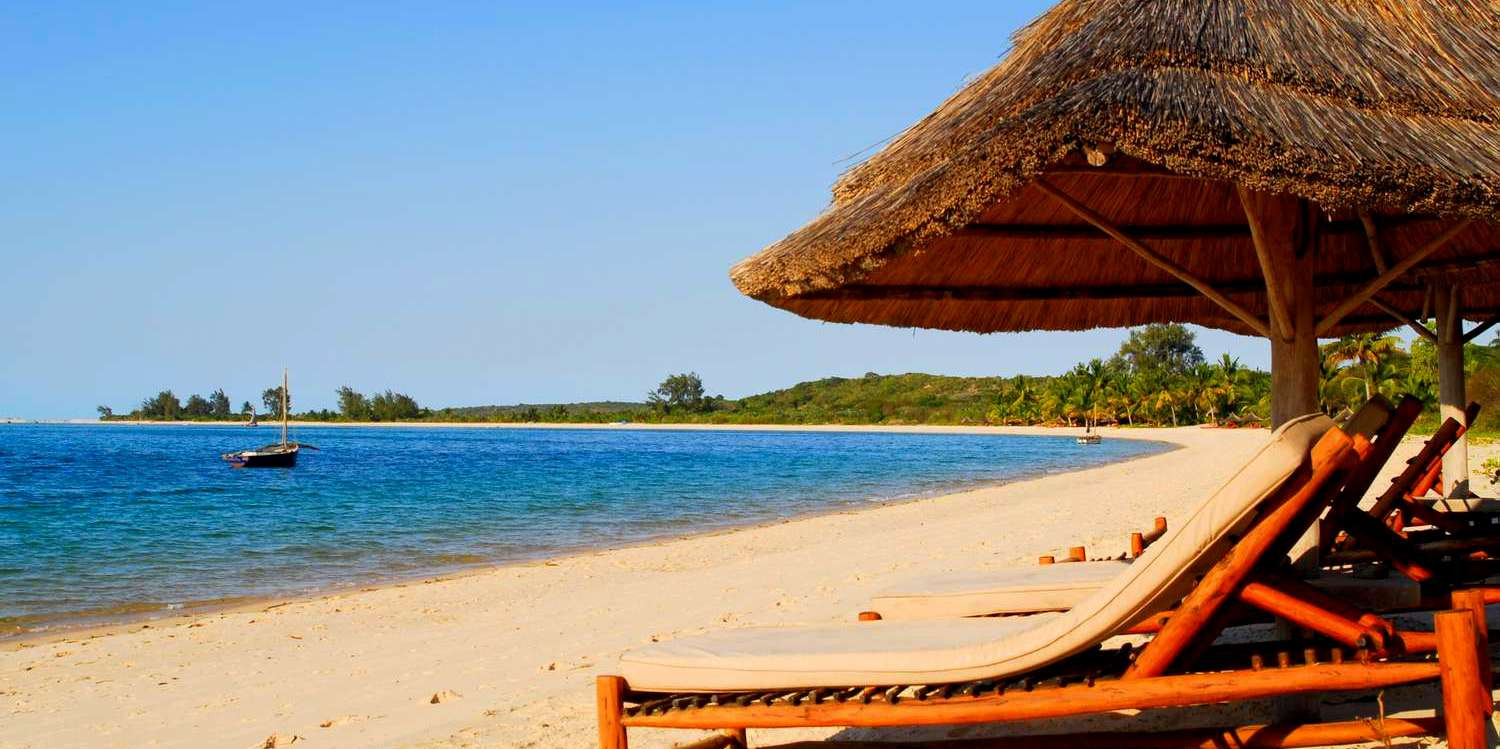










.jpg)